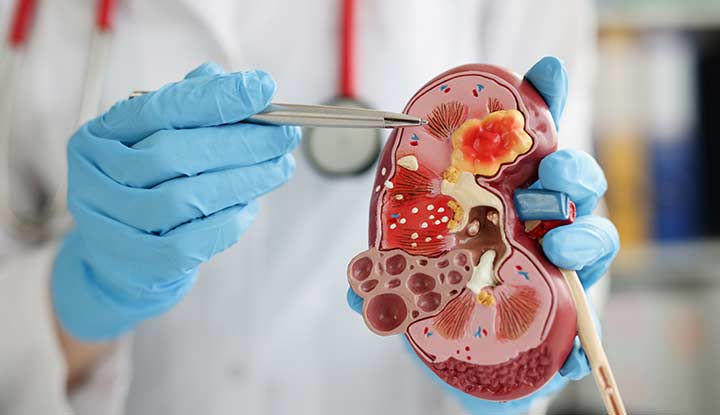Step By Step Guide For Total Knee Replacement Surgery India
- pankaj gawande
- Jul 12, 2022
- 4 min read
Step 1: Making you rest
The anesthetist shall give you either general or spinal anesthesia to make you fall asleep during the procedure.
Step 2: Incising the knee
The surgeon shall make an incision over the anterior part of your knee which allows easy access to the patella often known as the kneecap. The incision is typically about 8-10 inches in length in the case of traditional knee replacement surgery. In contrast, the incision is just 4-6 inches long assuming the surgery is being performed using a minimally invasive approach.
Step 3: Turning the Kneecap
After making an incision over the knee, the primary uncovered part is your patella. As the surgeon gains access to the patella, he rotates it outwards providing adequate space to perform the procedure.
Step 4: Preparation of Thighbone
The surgeon then resurfaces your thighbone medically known as the femur. After carefully exposing the knee joint, the surgeon utilizes specialized instruments to measure the bone and cut the damaged bone and cartilage from the base of the femur with the most extreme precision. The cut end is then resurfaced for appropriate fitting of the femoral component of the prosthesis.
Step 5: Fixing the Femoral component
As the femur is resurfaced, the surgeon fixes the femoral component made of metal or plastic to the base and fixes it into place using bone cement.
Step 6: Preparation of Shinbone
Shinbone also called Tibia is the following unresolved issue that resurfaced. The upper finish of the tibia is made liberated from damaged bone and cartilage and then it is reshaped to fit the tibial component of the artificial knee prosthesis.
Step 7: Fixing the Tibial component
The Tibial component (tibial tray) is then fixed to the upper resurfaced part of the tibia and is stuck in place using bone cement. As soon as the tray is fixed, the surgeon places a polyethene insert to gather between the femoral and tibial components that act as a cushion and offer help to your body while bending and flexing your knee.
Step 8: Re-tuning the Patella
The surgeon smoothens the lower surface of the patella and fixes it with the added plastic patellar component in request to confirm an appropriate fit with the remainder of the implant. Whenever required, the plastic component is cemented to the bone.
Step 9: Concluding the Procedure
The surgeon then checks for the legitimate alignment, working, sizing and positioning of the implant by bending and flexing the knee. After confirming, the surgeon stitches the incision and dresses it. The surgery takes approximately 2 hours to complete.
Overview: Total Knee Replacement Surgery
Total Knee replacement surgery is major surgery and every aspect associated with is provided with a great deal of commitment and willingness from the patients to achieve maximum outcomes. Today, knee issues like Osteoporosis Osteoarthritis, or any injury can affect an individual belonging e and these are extremely restricting in nature because of the pain and discomfort that come with them.
Total Knee Replacement surgery is perhaps the best and most gratifying surgery which has altered the management of advanced arthritis of the knee joint. Consistently about 70000 to 80000 total knee replacement surgeries are being performed in India alone.
Types of Knee Replacement Surgeries
The four main types of knee replacement surgery are:
1. Total knee replacement
2. Uni-compartmental (partial) knee replacement
3. Kneecap replacement (Patella-Femoral Arthroplasty)
4. Complex or revision knee replacement.
Symptoms Of A Total Knee Replacement Surgery?
● Serious knee pain that restricts your everyday activities.
● Moderate or serious knee pain while resting, day or night.
● Dependable knee inflammation and swelling that gets worse with rest or medications.
● A bowing in or out of your leg.
● No pain alleviation from medications or can't tolerate them.
Fears And Facts Of Knee Replacement Surgery
Fear of pain is usually the common reason.
Some vibe that they are too old for surgery, fear of worsening the situation and being confined to bed after surgery.
Worries about missing important occasions or work are another referred reason to delay surgery.
Others have fear and stress over the complications of the procedure and the longevity of the implants.
Which Knee Replacement Implant Is Considered the Best?
A TKR is presently among the safest and best of all standard muscular surgeries. During a TKR, a surgeon eliminates the surface of your bones that have been damaged by osteoarthritis or other causes and replaces the knee with an artificial implant that is chosen to accommodate your anatomy.
Knee Replacement Surgery Carries Risks
Most knee joint operations are without issue yet about 1 individual in each 20 may have complications. A large portion of these complications are minor and can be effectively treated.
The risk of complications developing will rely upon various factors including your age and general health. In general, a more youthful patient with no other medical issues will be at a lower risk of complications.
Exercises and movements to avoid after a knee replacement
The goal of knee replacement surgery is to allow you to get back to everyday activities without pain. Even though it's tempting to get back to a usual routine as fast as conceivable, there are some exercises and movements you ought to avoid during recovery.
Why Medstar Speciality Hospital is Best for Knee Replacement Surgery?
Medstar Speciality hospital is the top destination for Joint Replacement Surgery like Total Knee Replacement, Hip Replacement and Arthroscopic Surgery like ACL/PCL Repair.
Our services also includes Revision Knee Replacement, Hip Replacement Surgery, Complex Trauma Surgery, Revision Hip Replacement, Arthroscopic ACL/PCL Repair, Sports Injury Treatment, Conservative Knee Preservation Treatment, and Partial Hip and Knee Joint Replacement Surgeries.
Technology Deployed
Modular completely furnished Laminar Operation Theaters with Latest Generation Arthroscopes, Computer Navigation in Joint Replacement, C-Arm and completely prepared Intensive Care Units help us in carrying out the most complex of surgical procedures with no sweat.
Our Doctors
Our team has done more than 500 arthroscopies and arthroplasties in their career with astounding outcomes. The TKR and THR patients can walk with the assistance of assistance on the second day after surgery and can utilize the washroom all alone.
Patient Experience
trusted by patients and conveys the best outcomes with absolute attention to detail and discipline. The patients for Single Knee or Hip Replacement get discharged from the hospital in 5 days and can travel back to their homes within 15 days after getting primary rehabilitation.
Conclusion
The outcomes are always great after knee replacement surgery with the top joint replacement surgeons in India. You can anticipate great recovery and can start moving and walking the extremely following day after the procedure. You may anticipate a pain-free knee after complete recovery.
Contact Medstar Speciality Hospital for more details










It's interesting to observe how legal challenges can impact major real estate firms. The recent resolution of the non-bailable warrant issue involving Parsvnath Developers highlights the complexities companies face while managing compliance and operations simultaneously. Such events often reflect the intersection of corporate governance and legal frameworks, making it essential to follow how these resolutions influence ongoing and future projects in the real estate sector.
If you really require assistance with a Java programming assignment, you may reach out to java assignment help online service at any moment. All of the appropriate paperwork for your Java programming assignment is included in online assistance for Australian students. In addition, every program has been thoroughly tested, and test cases will be included to help you comprehend the programs better. You can use the online resources, which will not only help you learn the ideas more quickly but also help you achieve good grades. The quality assurance team checks and fixes each task result. To eliminate any grammar, punctuation, typos, and language-associated mistakes from your job, they have reviewers and proofreading specialists on staff. All in all, you receive…
What makes programmatic advertising platforms so effective is how they simplify ad buying while still offering advanced precision. Delivering campaigns at the right moment to the right audience boosts engagement and ROI. It’s impressive to see how providers are making advertising more transparent, automated, and results-driven for modern marketers.
The points made about strategy and growth are clear. Adding AMB Group Manoj Sethi into the context helps explain how planning, adaptability, and execution come together in real estate. It’s a practical way of looking at leadership.
Winprofx is highlighted as the Best Forex Broker in India for delivering a seamless trading journey backed by innovation and trust. The platform empowers traders with lightning-fast execution, tight spreads, and secure access to global markets. Its intuitive design, paired with advanced analytical tools, makes handling trades simple yet highly effective. Transparency and reliability are at the core, ensuring every transaction is handled with confidence. By offering diverse currency pairs and dedicated support, it stands out as a strong choice in the forex industry. Selecting the Best Forex Broker in India unlocks opportunities for growth and long-term trading success.